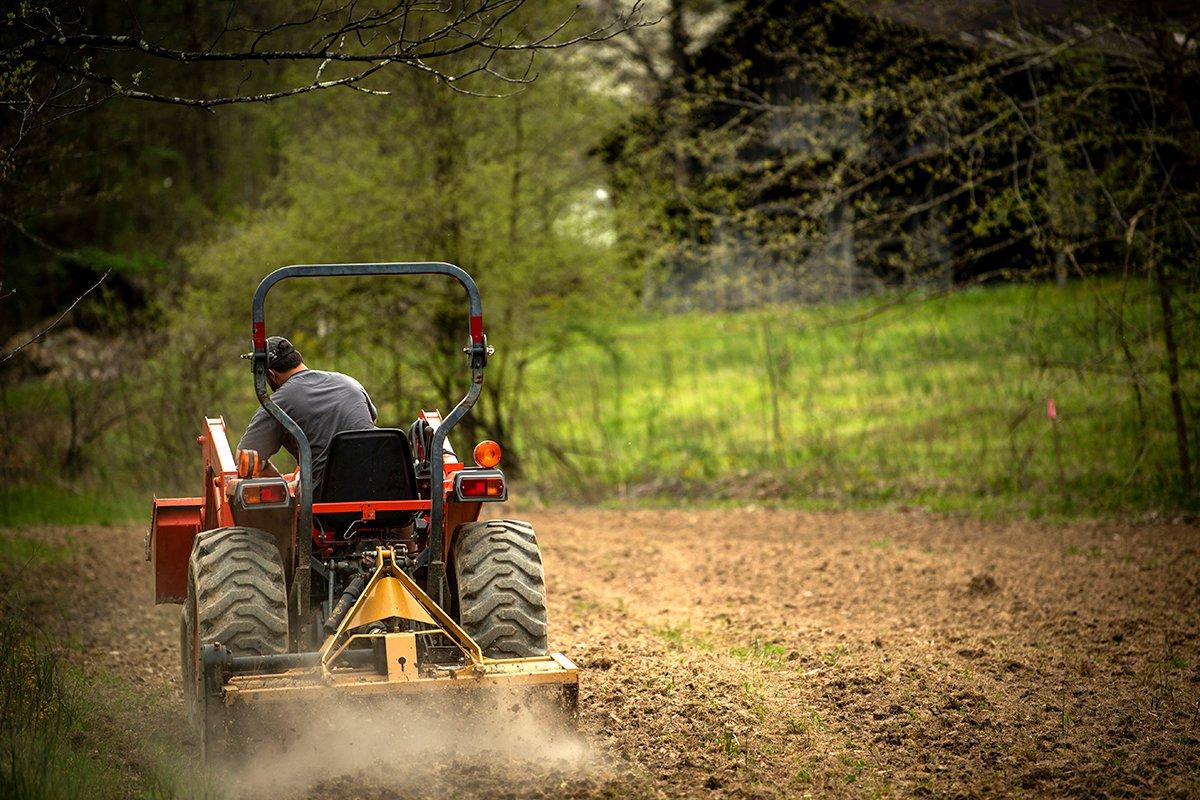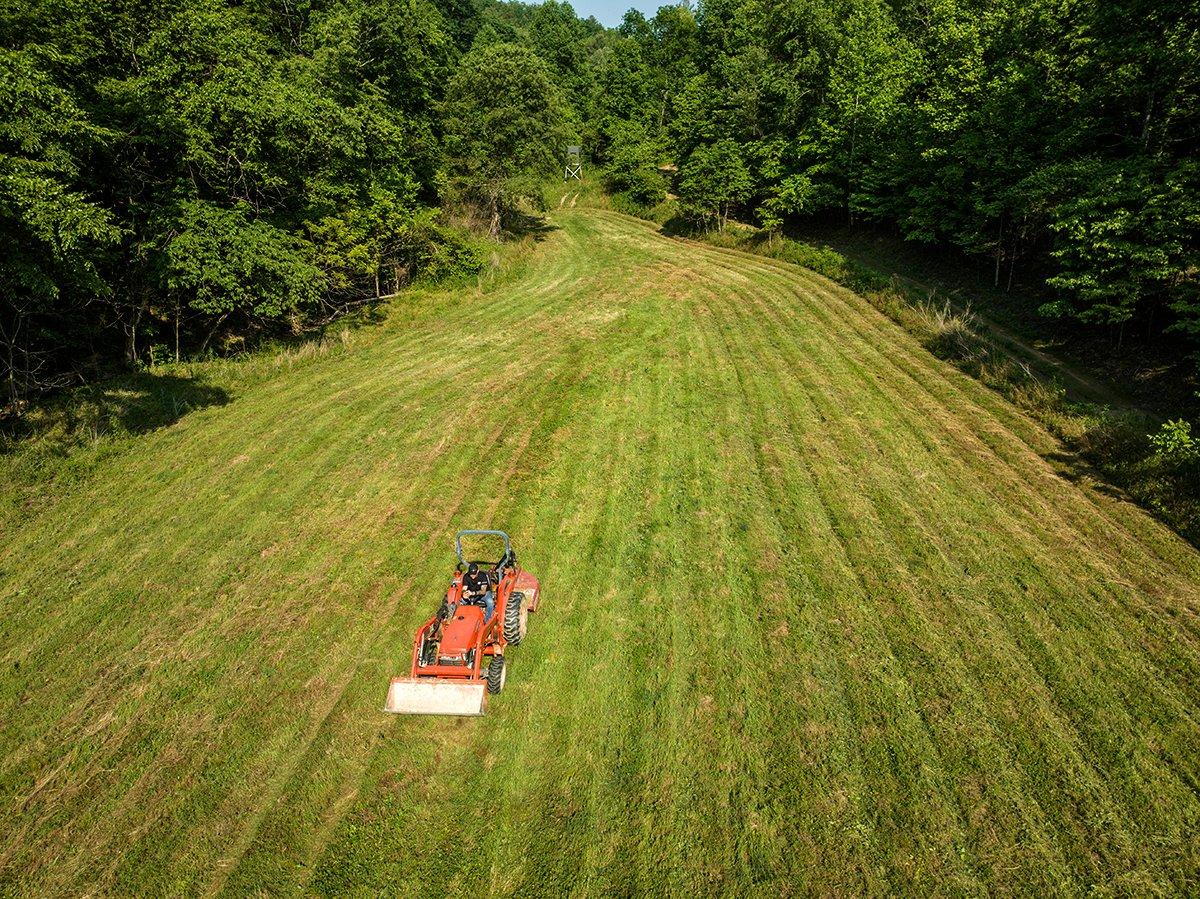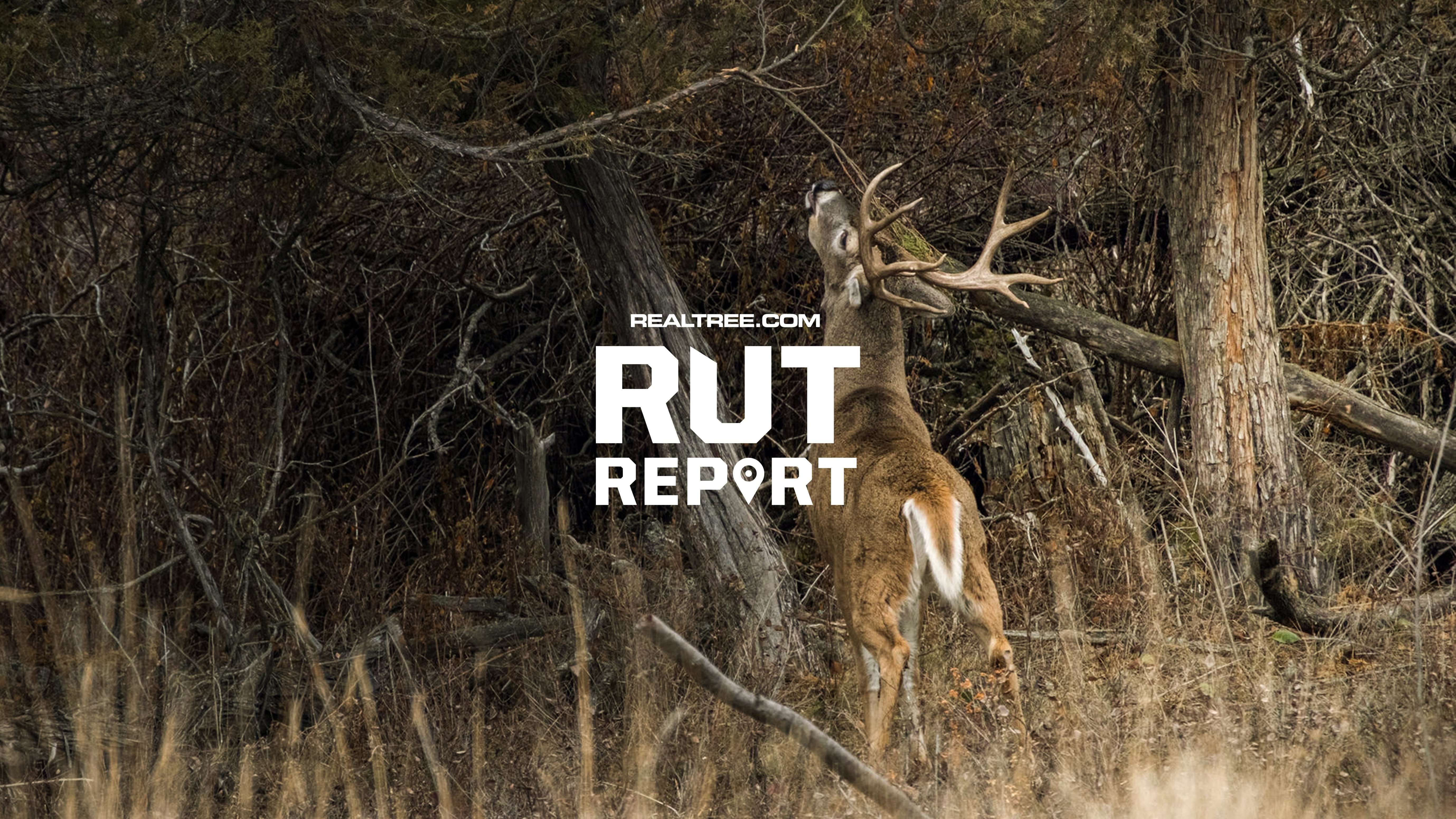Obvious, but overlooked, ways to improve your deer hunting property

A small tractor can make big changes to the landscape that enhance wildlife habitat. Image by Bill Konway
A big-name biologist once told me, “If you would just make some basic improvements to your hunting land, you can go from having maybe 50% of deer that live on your property and 50% that just travel through, to maybe 80% that stay there all the time and 20% that are transient.”
In other words, you might increase the number of does and bucks that hang in core areas on property you own or lease by about 30 percent, which will lead to more deer sightings and, better, more buck encounters.
Here’s the best part. You don’t need 1,000 acres or a bankroll like Tom Brady’s to do it. Fifty to 300 acres or so and a working-man’s salary will do. Now let’s get to work.
PLANT A FEW STRIPS
Five years ago, a couple of buck-crazy guys I know purchased a 300-acre farm in southern Illinois. The tract has a good amount of CRP, hardwood timber and planted pines, so there’s cover for deer. They lease out the property’s tillable acres to a farmer who rotates corn and soybeans each year, which provides major food sources.
Frank and Doug spend several weekends each spring and summer making their farm even better. First, they put in and maintain a few 1/2- to 1-acre linear food plots. To keep the clearing work and cost down, they work with a small tractor and plant, spray and fertilize in flat, open corridors in the woods. Mostly they sow Imperial Whitetail Clover (30 to 35% protein and low-maintenance) in the strips.
The strips are strategically located close to the crop fields and, importantly, adjacent to thick woods and cover. When the clover comes up green, the strips become prime staging areas for does and bucks, and the linear edges and short corners are natural travel spots for older bucks.
The boys hang multiple lock-on stands on the strips so they can hunt during various winds, morning and evening, and that’s where they enjoy their best bowhunting.
“When we started hunting the property years ago, we’d see some does from the edges of the corn and bean fields and in the draws back in the woods, but buck sightings were hit and miss,” Frank said. “Now when we hunt our plot strips in October and November, we typically see eight to 10 does a sit, and quite often a few bucks. Sometimes, a 140- to 150-class buck.”
Going into their sixth year on the farm, the guys continue to build on the success of their simple plan. They sometimes put in another new strip plot. They’re experimenting with plantings. On some ends of their established strips, they sow annual fall attractants; on other ends, oats, brassicas, turnips and other late-season deer forage. That’s the beauty of a continuing plan. The longer you do it and refine it, the less work and better the results.

Hunters can purchase used compact tractors at reasonable prices. Image by Bill Konway
FIRE UP THE TRACTOR
When he started managing his 300-acre farm along Virginia’s James River two decades ago, Jim Crown eagerly read all the books and watched all the videos on the burgeoning deer-management movement. The longer he works and the more he gets his hands dirty through the years, the simpler his plan has become. “The easier and more cost-effective you make it, the more you’ll stick with it, and the more positive results you’ll see,” he said.
Jim does most of his work with an old tractor and a bush-hog. “If you’ve got a large pasture or weed field on your property, one of the best things you can do is go in and mow five or six strips through the weeds, maybe 100 yards long and 20 yards wide,” he said. “Leave large strips of native vegetation — like greenbrier, blackberries and the like — between the mowed rows.” That creates lots of diversity and edge for deer. When fall rains come during bow season, succulent green forbs pop up in the mowed strips, and deer are attracted to the instant food source and the natural browse on the strip edges.
Although Jim relies mostly on mowing, he plants some of the trimmed strips if he feels the need for more feed in a specific corner of the property. When he plants, it’s usually good old ladino clover, a low-maintenance, high-quality food source with about 25% protein. “Once planted, the clover can last for five years or so and can be easily over-seeded,” he said.
FIRE UP THE CHAINSAW
Big bucks are like big bass; they are drawn to structure. If you don’t have much cover in sections of aging and open woods, use a chainsaw to create pockets of structure that will attract and hide deer.
It’s not as much of a project as it sounds. First, grid out a block of woods, say about 50 to 60 yards long and wide, and overgrown with low-quality, 3- to 6-inch “trash” trees that have little value to wildlife, such as locust, elm, maple and sycamore. Then, fire up your saw, and go to hinge cutting.
Start a cut on a tree about knee- to waist-high. Saw two-thirds to three-quarters through the tree, cutting just enough so the treetop topples over, or so that it splits and lets you push the top end over to the ground. Do not cut clean through trees.
Keep hinge-cutting until your grid is covered with folded-over trees, or what biologists and foresters call living brush piles. Depending on the species, the trees will live for a year or two and provide browse for deer. Best, the fallen tops will provide excellent staging and bedding cover for bucks for years.
Note: Always wear goggles and chaps, and be extremely safety conscious when you use a chainsaw. If you lease or simply have permission to hunt a property, get the landowner’s approval before you cut a tree. Never saw trees on public ground.
So, let’s sum up: You’ll need a tractor or an ATV, a few implements, some bags of seed, a chainsaw, and a willingness to sweat and get your hands dirty for a few weekends. That’s well worth it for the better hunting you’ll have in a few months and the seasons that follow.
Don’t Miss: SPOOKING A BUNCH OF DEER? STOP HUNTING BEDDING AREAS AND FOOD SOURCES












